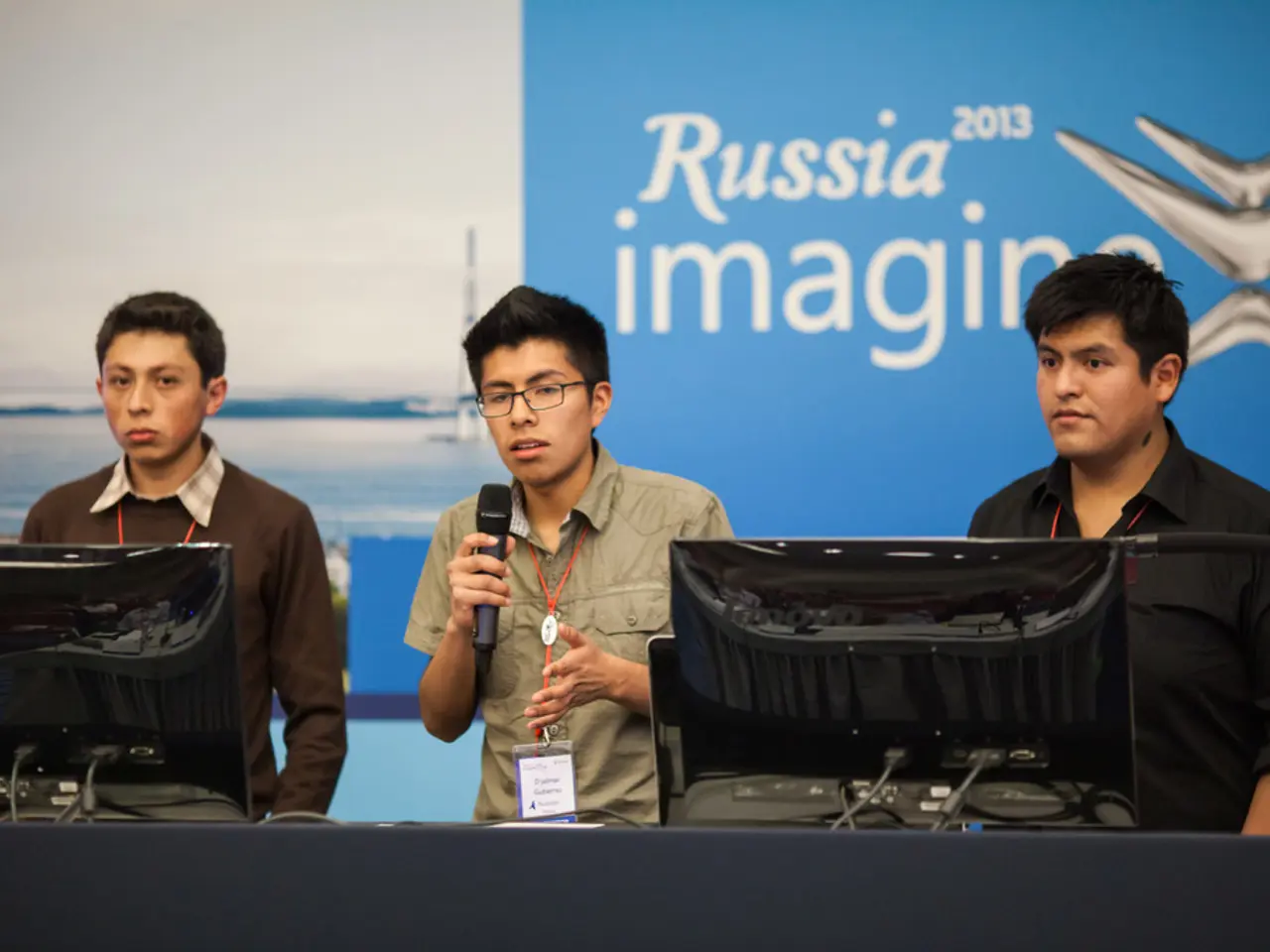Un Veiled Strategy: The Reason Behind Dmitry Rogozin Dispatching Unmanned Ground Vehicles to Ukraine and Its Significance
Russia's Marker UGV: Autonomous Combat Robot in Development
Russia's Marker Unmanned Ground Vehicle (UGV) is a walking combat robot designed for minimized human intervention and increased combat efficiency. Developed by the Advanced Research Foundation (ARF) and Android Technologies, the Marker is a test bed for autonomous, robotic, and artificial intelligence technologies.
The Marker is capable of moving over rough terrain at speeds up to 10 km/h, twice the speed of earlier models. Its AI-enabled autonomous capabilities include technical vision, goal recognition, autonomous movement, and group control using neural networks. The system has undergone testing for voice command control by unit commanders, allowing orders to be issued similarly to those given to human soldiers.
The Marker is designed for multi-role operations, including reconnaissance and strike missions. It is also equipped with autonomous mini-drones for reconnaissance purposes. While there is no open-source confirmation of direct combat against Western tanks, the broad goal of Russian combat robots like Marker includes integration into combined arms warfare, potentially targeting armored vehicles, including Western tanks.
The Marker was tested as a counter-UAV platform before Russia invaded Ukraine. However, there is no news of any combat-ready UGVs like the Shturm or Vihr/Udar going through combat stress tests. The Russian military is carefully rolling out remote-controlled Uran-6 and Prokhod demining UGVs in the Donbas under Russian control, but the deployment of the Marker may require Russian soldiers to retrieve a damaged UGV.
As of early 2023, Dmitry Rogozin, a former Roskosmos director, announced that several Marker UGVs have arrived in the Donbas, Ukraine. The Marker combat version is equipped with antitank guided missiles, automatic grenade launchers, and machine guns. The success of the Marker, especially in an ISR role with a tethered drone, may open the possibility for subsequent testing of other vehicles.
| Aspect | Status / Capability | |----------------------------|------------------------------------------------------| | Mobility | Walking robot, up to 10 km/h on rough terrain | | AI & Autonomy | Autonomous navigation, technical vision, goal recognition, group control via neural networks | | Control Interface | Tested tablet and voice command control for commanders | | Operational Deployment | Tests completed by 2021; intended transfer to Ministry of Defense | | Combat Role | Multi-role (recon, strike) with autonomous mini-drones; potential use against armored vehicles, including Western tanks | | Confirmed Combat Use | No open-source confirmation of direct combat against Western tanks yet |
Russian military robotics leadership envisions Marker as a key part of future combat operations with minimized human control and highly autonomous functions. However, the current status of the Marker and its impact on the battlefield remain uncertain due to limited numbers and logistical issues.
- The Marker UGV, developed for increased combat efficiency, is a test bed for autonomous, robotic, and artificial intelligence technologies, which could significantly alter warfare and national security landscapes.
- The Marker's AI-enabled autonomous capabilities include technical vision, goal recognition, autonomous movement, and group control using neural networks, indicating a shift towards more advanced security strategies.
- With its capability to deploy autonomous mini-drones for reconnaissance purposes, the Marker further demonstrates the integration of technology, particularly drones and artificial intelligence, in modern war-and-conflicts.
- The Russian military's plans for the Marker involve its deployment in multi-role operations, including reconnaissance, strike missions, and even targeting armored vehicles, potentially including Western tanks.
- As politics and general news continue to evolve, the successful integration of robotic systems like the Marker into military operations could transform logistics and intelligence gathering, thereby reshaping the global defense environment.
- Despite the Marker's impressive capabilities, there's no open-source confirmation of direct combat against Western tanks, leaving questions about its effectiveness in real-world conflicts.
- The future of combat operations may see a significant reduction in human control with systems like the Marker, exhibiting highly autonomous functions and potentially revolutionizing traditional warfare strategies.




